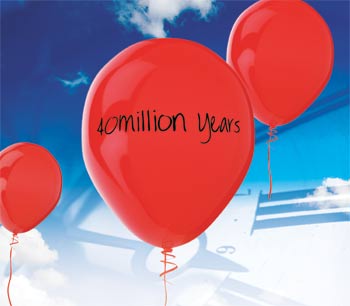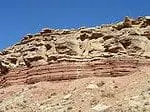Geologist John Woodmorappe in his book The Mythology of Modern Dating Methods describes every age estimate as a trial balloon. When a scientist publishes an ‘age’, it is like releasing a balloon. If other scientists like his answer they will let the balloon float, but if they don’t like it they will shoot it down.1
The great physicist William Thomson (Lord Kelvin, 1824–1907) is famous for his age estimates of the earth. In the late 1800s, he was saying the earth was between 20 and 40 million years old. Of course Kelvin had not measured this age but calculated it using complicated physics and mathematics.2 He assumed the earth was first a molten blob and guessed all the details, like its initial temperature and conductivity. Based on these assumptions, he calculated the time for the blob to cool.
Like a balloon, Kelvin released his estimate, and it floated around for decades. Many scientists liked his answer. It was consistent with calculations of the age of the sun by Hermann von Helmholtz (1821–1894).3
… it is worth remembering that all ages are trial balloons. They are not objective.
But many scientists disliked Kelvin’s answer. Evolutionary geologists thought 20 million years was far too short because they believed geological processes have always operated slowly. Evolutionary biologists, like Charles Darwin, were not happy either—there was not enough time for evolution. Darwin described Kelvin as his “sorest trouble” and said, “I require for my theoretical views a very long period before the Cambrian formation.”4
Discovery of radioactivity
Things changed dramatically after 1896 when Henri Becquerel (1852–1908) discovered radioactivity. Those who preferred an older earth claimed that heat from radioactive decay deep within the earth meant it took vastly longer to cool. Thus, radioactivity allowed a different history for the earth—one that could extend for as long as geologists and biologists might need.5
Radioactivity also allowed age calculations for individual rocks, and geologist Arthur Holmes (1890–1965) became famous for this. At age 21 he published his first uranium-lead result and recalculated ages from other workers’ data. His oldest ‘age’ was 1,640 million years,6 which was a vast increase on 20 million—indeed on any numbers previously published. The scientific community was incredulous.

Yet, for all the confidence of those early workers, their calculations were based on ignorance. In those days they did not know there were two different uranium decay chains or different isotopes of uranium and lead. In fact, they did not know isotopes existed until 1913.
That’s why every published date is a trial balloon. Assumptions are always made in ignorance. Every age result is always tentative, waiting for a new finding to shoot it down.
Then, as more and more rocks were ‘dated’, the oldest ages gradually crept up to 3,000 million years, and beyond. A curious complication emerged in the late 1940s—the earth became twice as old as the universe.7
The age of the universe is another trial balloon—calculated from the Hubble constant, assuming the big-bang history. Edwin Hubble (1889–1953) had such standing that no-one seriously questioned his value for the constant. So the problem was blamed on radioactive dating. Some astronomers even suggested that the radioactive decay rate had changed with time. But the astronomers eventually gave in. In the 1950s new measurements of the Hubble constant made the universe safely older than the earth. Clearly, ages are not objective scientific measurements but based on assumptions and beliefs.
You based the age on what?
Clair Patterson (1922–1995) is the man credited with dating the currently accepted age of the earth. But there is an ironic twist. Patterson did not use earth rocks. He used meteorites! That’s because, by Patterson’s time, it was widely believed that the earth had accumulated from particles and rocks called ‘planetesimals’,8 and that meteorites were junk left over from the earth’s formation.
The Bible reveals the true history of the world and we can date the events using the careful records it provides.
The age Patterson calculated was 4.55 billion years, plus or minus 70 million years.9 He also produced a graph of the composition of lead from four meteorites and lead from modern ocean-floor sediment. Because the ocean-floor sample plotted on the same line as the meteorites, Patterson argued that they all formed from the same cosmic material.
Prominent geologists, such as Arthur Holmes, were not happy. To use iron meteorites, they claimed, was wrong.10
How can we know that the earth and the meteorites formed at the same time? How can we know they are both from the same material? We can’t.
Even so, the number Patterson calculated in 1956 is still accepted today and universally quoted. His trial balloon is still floating.
Yet, as more ocean floor sediments have been analyzed, it has been found that they do not all fall on the straight line but plot all over the place.11 Furthermore, geologists are now saying the lead isotopes of the earth have been reset by the formation of the earth’s core, which means Patterson used the wrong history for the earth.
In spite of these and other problems, long-age scientists are still happy to work with 4.55 billion years. Actually, any number between 3 billion and 7 billion years would probably be okay for them, so 4.55 billion is a happy choice—and it looks precise and authoritative. It is large enough for the geologists and small enough for the astronomers. Everyone has plenty of time to work with, so there is nothing to gain by changing the number.
But it is worth remembering that all ages are trial balloons. They are not objective. Certainly the measurements are objective but they are not measuring age. To calculate an age the scientist needs to assume the history of his sample—something he cannot objectively check. And his assumptions are based on his naturalistic belief about the world.
A meaningless tragedy?
Beliefs have consequences. From Mozambique, in his early twenties, geologist Arthur Holmes wrote home about the stars: “I felt somehow what a fearful meaningless tragedy the whole Universe appeared to be.”12
If naturalism is true, then Holmes was right—there is no meaning to this universe.
However, the only way that we can reliably know what happened in the past is by the historical method. I know my age to the nearest day by this method. My birth certificate has my date of birth as recorded by eyewitnesses. We know when Napoleon lived by the same method.
The Bible reveals the true history of the world and we can date the events using the careful records it provides. The genealogies, such as in Genesis 5 and 11 and believed by New Testament writers, record the ages of people in history like Abraham, Terah, Noah, Seth and Adam at the birth of the next in the line. This shows there are no time gaps, so we can derive the true age of the earth.13
And the Bible reveals there is a purpose for this universe, and for every human life. That’s why the age of the earth is not only critical for understanding science but for understanding my existence as well—and yours.
Related Articles
Further Reading
References
- Woodmorappe, J., The Mythology of Modern Dating Methods, Institute of Creation Research, El Cajon, CA, 1999. Return to text.
- Logically his methods could calculate at best an upper limit for the age. Return to text.
- Press, F. and Siever, R., Earth, 4th Ed., W.H. Freeman and Co., New York, p. 40, 1986. Return to text.
- Letter to James Croll, 31 January 1869, The correspondence of Charles Darwin, volume 17: 1869, edited by Frederick Burkhardt, James A. Secord, Sheila Ann Dean, Samantha Evans, Shelley Innes, Alison M. Pearn, Paul White, Cambridge University Press, 2009, www.darwinproject.ac.uk/correspondence-volume-17. Return to text.
- It is widely paraded that the discovery of radioactivity solved the heat problem but that is not so. Empirical evidence still favours the view that the earth is much younger than presently believed. See: Woodmorappe, J., Lord Kelvin revisited on the young age of the earth, Journal of Creation (formerly TJ) 13(1):14, 1999, creation.com/kelvin. Return to text.
- Lewis, C., The Dating Game: One Man’s Search for the Age of the Earth, Cambridge University Press, pp. 63–64, 2000. Return to text.
- Lewis, ref. 6, p. 191. Return to text.
- But more recent research shows they would not have stuck together. See Earth was a freak, New Scientist 177(2388):24, 29 March 2003; Sarfati, J., Earth is too special ? Creation 28(3):42–44, 2006, creation.com/earthspecial. Return to text.
- Written as 4.55 ± 0.07 Ga; See: Patterson, C.C., Age of meteorites and the Earth, Geochimica et Cosmochimica Acta 10:230–237, 1956. Return to text.
- Lewis, ref. 6, p. 227. Return to text.
- Williams, A.R., Long-age isotope dating short on credibility, Journal of Creation (formerly TJ) 6(1):2–5, 1992. Return to text.
- Lewis, ref. 6, p. 93. Return to text.
- Freeman, T., Genesis 5 and 11 fluidity question, Journal of Creation 19(2):83–90, 2005, creation.com/fluidity; Sarfati, J., Biblical chronogenealogies, Journal of Creation 17(3):14–18, 2003, creation.com/chronogenealogy; Cosner, L., Can Christians believe dogmatically that the earth is 6,000 years old? creation.com/dogmatic-6000-years, 19 December 2009. Return to text.







